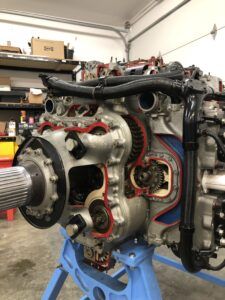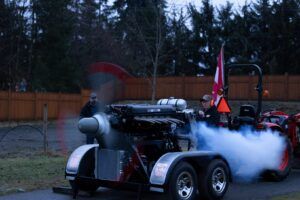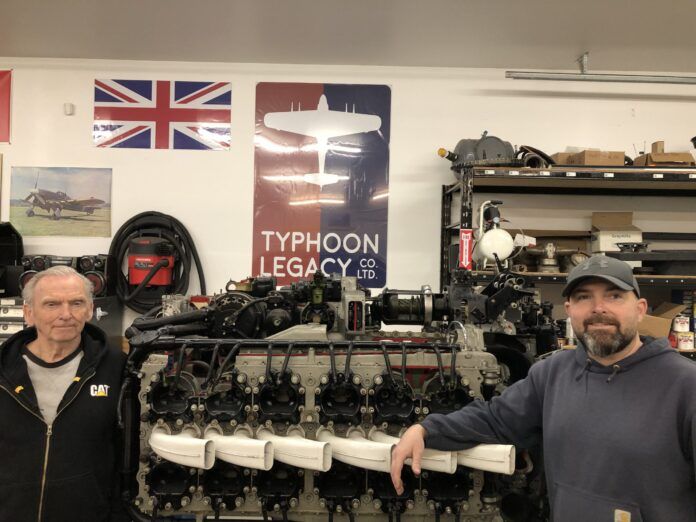A very rare World War II fighter plane is one step closer to flying again with the arrival of an extremely rare engine in Black Creek.
First built to break a speed record and later used in the war, a Hawker Typhoon is now being restored by Ian Slater, Rob Roy and others of the Typhoon Legacy Co. Ltd. with a passion to see the plane fly once again.
The project began for Slater as a small boy, seeing photographs of the Typhoon from his grandmother and wanting to build one as an adult. Along with Roy’s help, that dream is slowly becoming a reality.
In 2019, the duo needed to find the extremely rare Napier Sabre engine that powered the plane. Slater says there are only around 40 in existence from the war, with 10 or fewer that can be rebuilt. But they were able to track one down in New Zealand in exchange for a running, pre-war Rolls Royce Merlin engine.
“I actually think he was almost jokingly responding when he said, ‘well if you give me a running Rolls Royce Merlin we’ll talk about a trade,’” said Slater. “My response was ‘okay’ and we just did it, we started searching for a Merlin and we brought it in.”
After three years sourcing parts and restoring the Merlin, a difficult task given its age, it was traded, and the Napier Sabre arrived in their shop just outside of the Comox Valley.
Weighing in at one tonne, the 37 litre, 24-cylinder sleeve-valve engine once propelled the Typhoon through the skies at over 400 miles per hour.
Slater says the plane was pushed into the war effort, moving to a ground attack role that was one of the first of its kind and instrumental in World War II.
“It was really the world’s first close air support aircraft and it proved itself going from D-Day forwards and really took the Germans and wreaked havoc,” said Slater. “Our Canadian significance with this is there were three dedicated Canadian Typhoon squadrons, 438, 439 and 440 squadrons.”
The project’s significance goes deeper for the duo with Slater and Roy’s military service and a recognition of all the pilots who lost their lives not only fighting in the war, but in the aircraft’s development.
“The engine was massively advanced compared to anything else, very different. Technicians had problems with them. They had about 25 hours before they would seize up and they had a lot of problems with the actual sleeve valve mechanism,” said Slater.
“They lost a lot of pilots to technical difficulties as they developed this engine and the air frame, but those guys were pushed into combat at the same time they didn’t know what was going on with the aircraft.
“There’s a lot of guys that died for it and they willingly went up and risked their lives to do it.”
Slater adds the pilots were asked to recreate the failures by pushing them to the limits. It took many efforts before someone survived and they were able to adjust and fix the aircraft’s faults.
With only one remaining frame left in the world, Roy and Slater want to bring the aircraft back to showcase its history in Canada so it and veterans are not forgotten.
“There’s huge Canadian significance in these aircrafts, but with only one actual airframe left in the world from the war of over 3,300 built, it’s not something you can see in Canada and the history falls by the wayside,” said Slater.
A project like this one is expensive. However, Slater says they have been fortunate to have partnerships with corporate sponsors, but bigger than that are donations from citizens wanting to see this aircraft fly again.
“We’ve set up a paid subscriber channel, so while we do post everything on YouTube, it’s advanced and we’ve got forums and things. It costs $8.99 Cdn per month,” said Slater. “That’s been a massive change, that really pushed the Merlin through.”
“We were working on that engine, the Merlin, for three years and they all stuck with it,” said Roy.
More information about the project and how to support it can be found on www.typhoonlegacy.com.
The next steps will be to get the Napier Sabre up and running, as Roy and Slater say many want to hear it roar.






